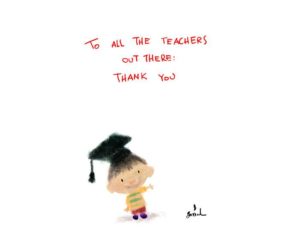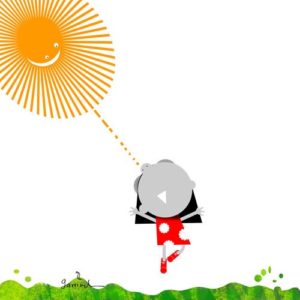School’s Out: Unschool Yourself
Description
In honor of the recent occasion of the full moon in July, the auspicious day of Guru Purnima, India’s ancient tradition of “teacher’s day”, I pay homage to all the guides, gurus, teachers, professors, lecturers, mentors, coaches, instructors, trainers, advisors, counselors, tutors, and parents in the world, appointed, self-proclaimed, or incognito, who are dedicated to cultivating knowledge, reasoning, creativity, intuition, wisdom, and liberation.
Urmila Samson has been on the path of revolutionizing our approach to education since the age of 16. She was first influenced by her father and grandfather who believed that schools robbed humans of the opportunity for realizing their fullest potential. Her own thoughts on education started to take shape after she finished her secondary education and was then exposed to classic works on the topic: Summer Hill by A.S. Neill, Deschooling Society by Ivan Illich, and the ideas of Paulo Freire.
Neill was a Scottish author and educator and the founder of Summerhill School, based on the principles of freedom from adult authority and community self-governance. Illich, a Croatian-Austrian philosopher was a thoughtful critic of many Western cultural institutions and practices in education, medicine, and economics. Freire was a Brazilian philosopher and educator best known for Pedagogy of the Oppressed, in which he advocates for treating student and teachers as co-creators of knowledge. While exploring these classics she came to feel that schools are the worst place for children to grow up. Schools are not an environment in which young people can easily learn, grow, and experience life in such a way to become fully self-expressed human beings.
Urmila actually really enjoyed her convent school education. She was the first in and the last out as she enjoyed the atmosphere and all the activities, such as sports, drama, elocution, art, music, and the like. Her parents didn’t pressure her during her school years about homework or achievements and accomplishments. She recognizes that for the majority of parents and the majority of children, mainstream schools are a necessity to participate in the current socioeconomic system. For many people, a diploma, degree, or certificate from a standardized, industrialized, institution is the exact ticket to the empowerment and employment they need to flourish, or at least just survive.
In this intimate interview, without being critical of any method, Urmila elucidates the differences between mainstream education, alternative schools, homeschooling, and unschooling.
Mainstream schools are public or private schools which follow a standardized curriculum and are meant to prepare students to participate as cooperative citizens in the mainstream economy. Class sizes are generally larger than in the other methods, which has its pros and cons. With larger classes comes less control by the adults in positions of authority. Discipline and structure can suffer, and sometimes students who need more attention in order to succeed do not receive it. On the other hand, with less control comes more freedom, with the space for children to just “be children” for some time. Teachers aren’t generally afforded much flexibility in the curriculum, and as their own creativity is somewhat stifled, the children also suffer the same. As teachers are often overloaded, and less satisfied, their investment in teaching may also decline over time. Those who succeed in the system generally proceed to higher education or professional training. Contrary to popular belief, there is hope for those who don’t blossom in the system.
Alternative schools are not terribly different from mainstream schools. Class sizes are smaller and teachers are, in general, more passionate and invested in teaching. There is more flexibility in the curriculum. The smaller class size affords the opportunity for giving each student the attention they need. On the other hand, the impact of each person in the group, whether it is the teacher or a student, is much greater. So, unless it’s a great fit, it can be uncomfortable. The analogy is the difference between a nuclear family and a joint family. In the latter, the influence of any one person on the child gets diffused, along with any dysfunctional dynamics. Small class size offers more opportunities for experiential, hands-on, creative group or individual projects.
Homeschooling is very similar to alternative schooling; it is essentially school at home. Parents who feel they know their children well, and know what is best for them, choose a curriculum that suits their child’s needs and interests. Students are spared tedious, repetitive tasks, and are able to proceed at their own pace. There is flexibility in how a student approaches a subject, and other homeschooling children and parents share their learning experiences and teaching responsibilities. Students get a diploma and emerge prepared for the board exams required for higher education, and, at least in India, almost universally plan to go on to university or college. International homeschooling statistics vary widely around the globe, ranging from 2.5 million students in the USA to homeschooling being illegal in some countries.







